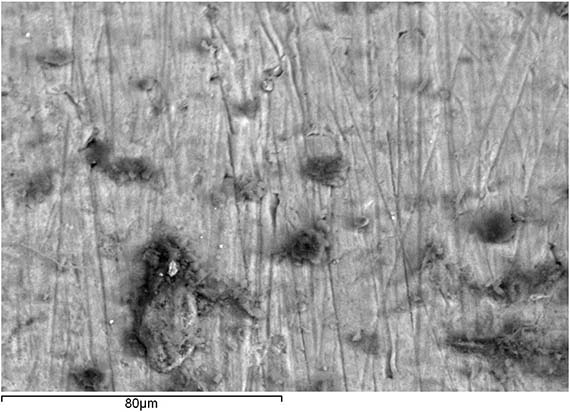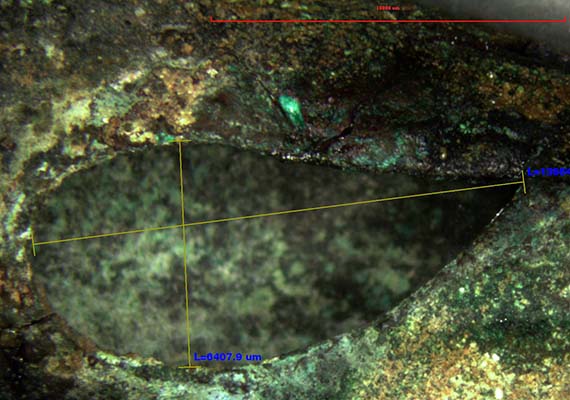Since July 2014, much progress has been made in joining pieces of bone core and bulbs; now only small and featureless splinters remain detached. The connections between bronze tubing sections form many larger elements (see below) that are stable enough to be handled and used in the configuration of entire instruments.

Ongoing materials analysis has also provided important information. Samples from wooden core material were dated by radiocarbon analysis to between 52 B.C. and A.D. 54, congruous to the burial of Queen Amanishakheto.
The precision of the fine mechanics of interconnected bronze tubes and their rotating sleeves continue to astound. A polished and etched metal cross section of one tube revealed a highly stressed metal structure, cold worked and annealed during manufacture. The seamless tubes were most likely cast from tin bronze and perhaps hammered. Final turning with a lathe-like instrument facilitated the perfect fitting of extremely thin and straight tubes, leaving distinctive parallel marks on the metal surface. In a few locations on the bronze tubes which have not been mineralized by corrosion, these marks can be observed under high magnification, as in the back-scattered electron image below.

Music Archaeology
In late spring 2015, a group of music archaeologists, leading researchers of ancient music and in particular of auloi, arrived for a fortnight of intense study.

The goal of this study was twofold: assemble as many complete or near-complete instruments as possible, and prepare detailed documentation that will hopefully lead to the production of replicas that can be played. During this session, many important questions about the manufacture and mechanisms were addressed.



After sorting tube sections by internal and external diameters and other distinctive features, and measuring distances between finger holes, tentative arrangements of the first pipes are made. Helpful to the process are two photographs taken of the fragments in situ in the burial, as well as the corrosion patterns on the outer bronze tubes. Equally valuable is a grid of relative finger hole distances that was based on known ancient scales, along with assessments of whether any given arrangement of finger holes could possibly be played by the human hand. The expertise of the music archaeology scholars and detailed studies of auloi in European collections have been indispensable. As a result, hypothetical layouts of eight pipes (some shown below), forming four instruments, have been created, with at least four more pipes and additional tubing sections remaining to be studied.
